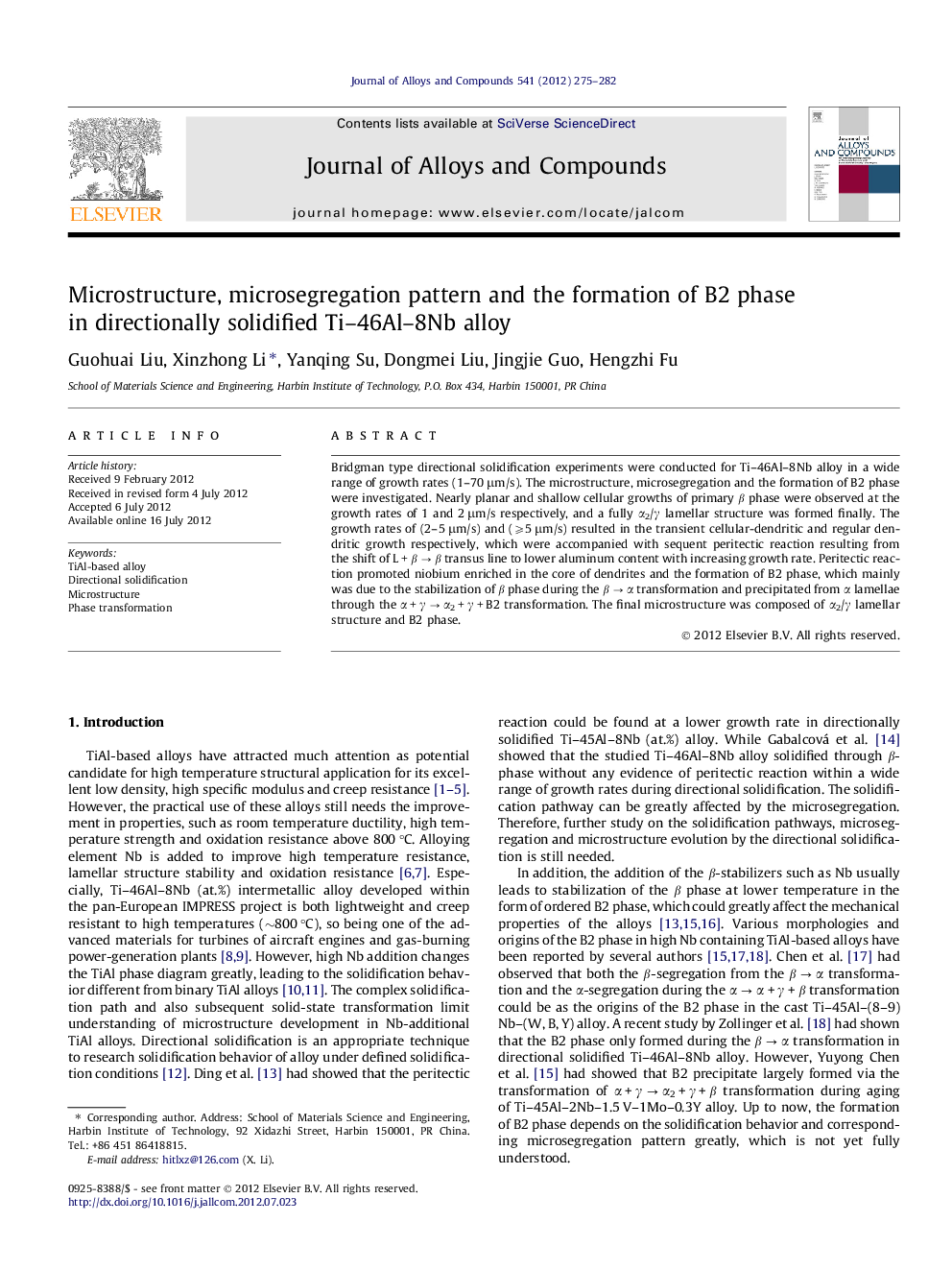| Article ID | Journal | Published Year | Pages | File Type |
|---|---|---|---|---|
| 1615455 | Journal of Alloys and Compounds | 2012 | 8 Pages |
Bridgman type directional solidification experiments were conducted for Ti–46Al–8Nb alloy in a wide range of growth rates (1–70 μm/s). The microstructure, microsegregation and the formation of B2 phase were investigated. Nearly planar and shallow cellular growths of primary β phase were observed at the growth rates of 1 and 2 μm/s respectively, and a fully α2/γ lamellar structure was formed finally. The growth rates of (2–5 μm/s) and (⩾5 μm/s) resulted in the transient cellular-dendritic and regular dendritic growth respectively, which were accompanied with sequent peritectic reaction resulting from the shift of L + β → β transus line to lower aluminum content with increasing growth rate. Peritectic reaction promoted niobium enriched in the core of dendrites and the formation of B2 phase, which mainly was due to the stabilization of β phase during the β → α transformation and precipitated from α lamellae through the α + γ → α2 + γ + B2 transformation. The final microstructure was composed of α2/γ lamellar structure and B2 phase.
► The quenching interface evolved from planar to dendrite growth with increasing growth rate. ► The increase of growth rate promoted the non-equilibrium solidification. ► Peritectic reaction leaded to significant chemical inhomogeneity. ► Two origins had been observed leading to the formation of B2 phase. ► TEM images confirmed the precipitation of B2 phase with different morphologies.
